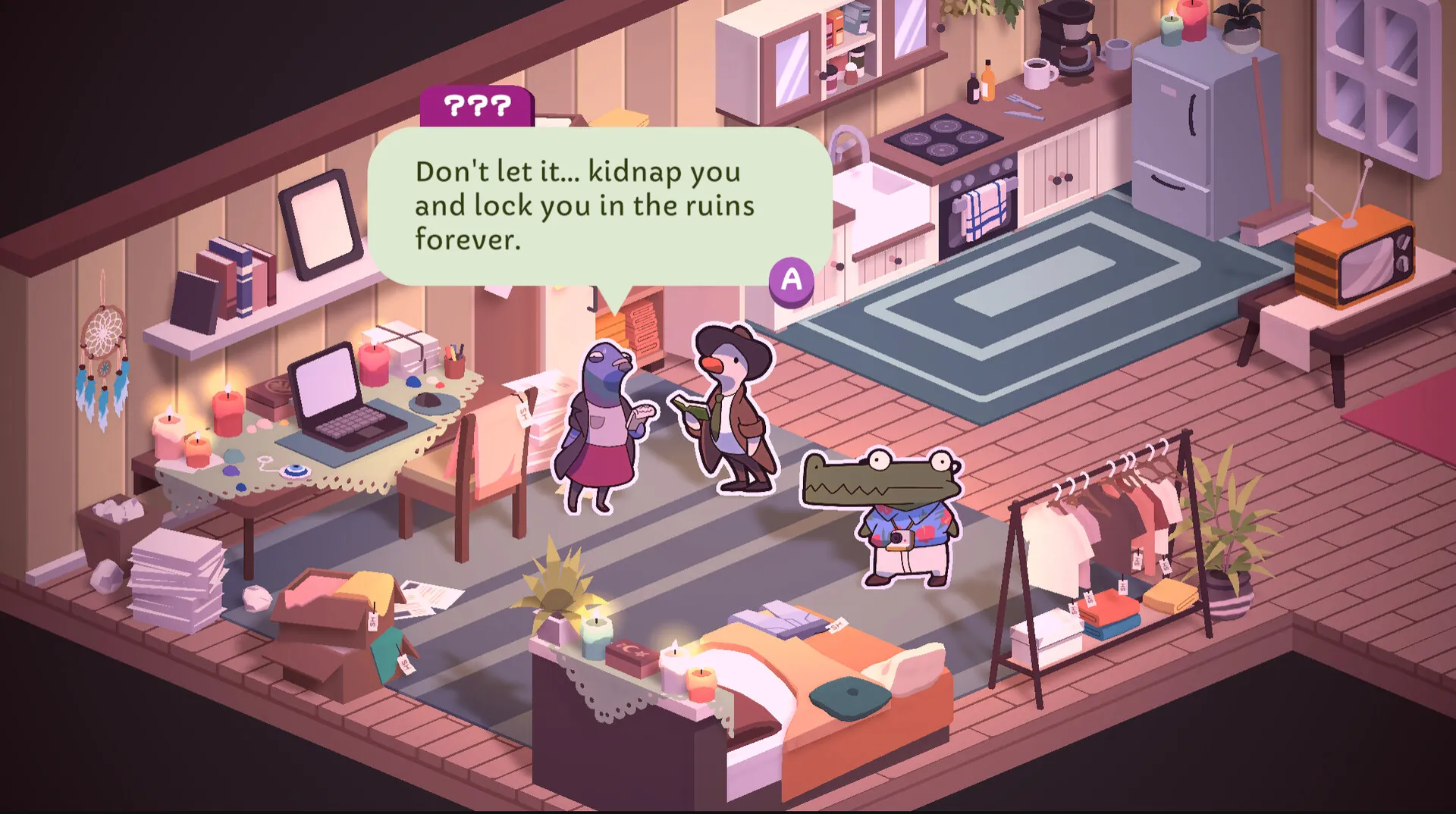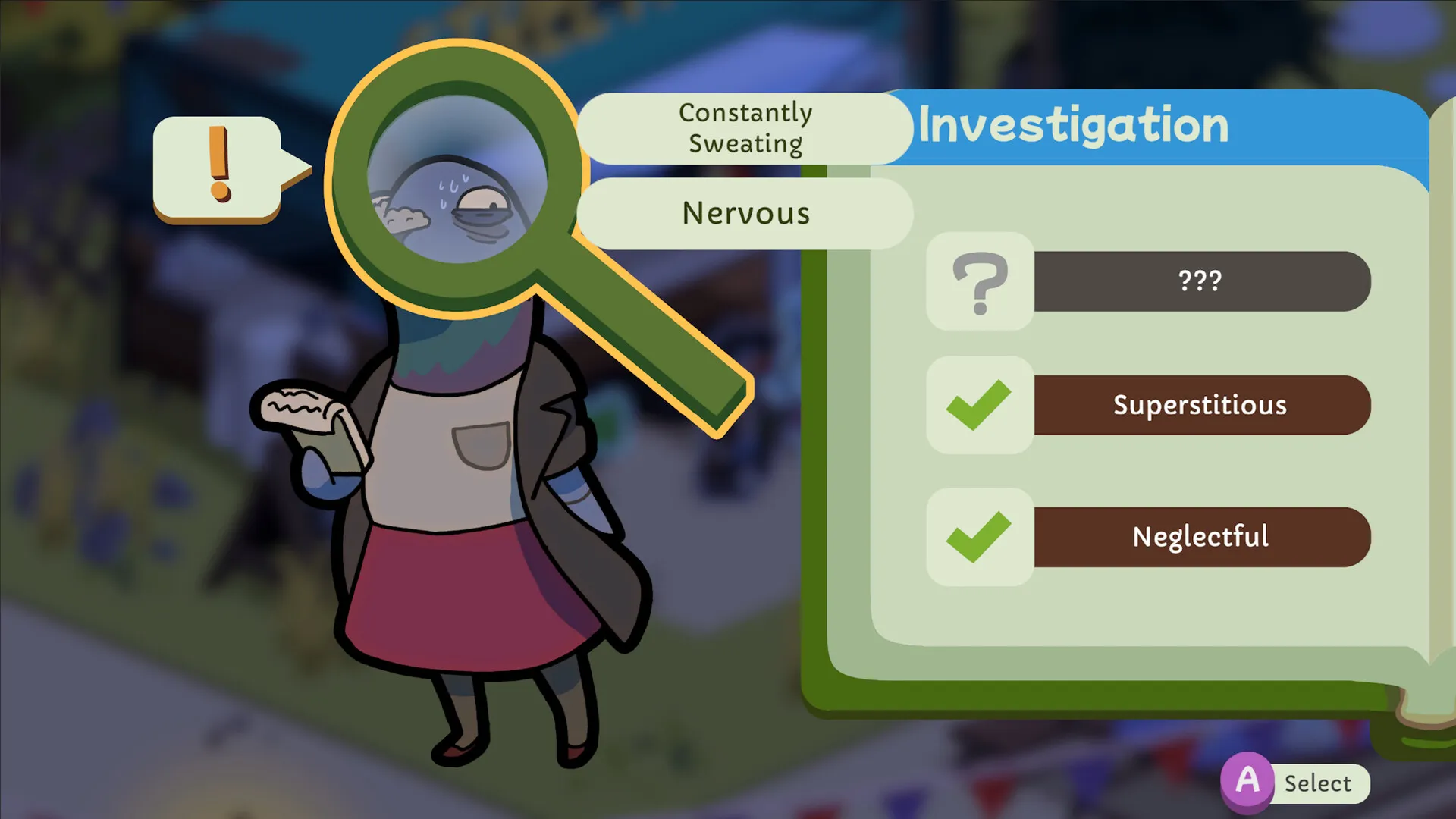In sepia-tinged panels and smoky jazz riffs, Duck Detective: The Ghost of Glamping drops you into a private-eye satire that feels plucked from a grainy 1940s reel. Sporting his trademark fedora and trench coat, PI Eugene McQuacklin wakes up wrestling with divorce blues and an insatiable bread craving. Before he can mutter “quack,” his housemate drags him to a luxurious campsite beset by stolen chairs, cryptic whispers, and a ghost story that refuses to stay buried.
This stand-alone adventure runs about two to three hours, pitting you against paper-cutout suspects and Mad-Libs-style puzzles. Every scene crackles with tongue-in-cheek humor—loading screens boast trivia like “ducks can’t taste bread,” and a one-button quack attack adds pure comic relief. Full voice acting delivers McQuacklin’s gravelly monologues alongside a cast of furry lodge-goers, all set against a toe-tapping jazz score.
Despite its brevity, Ghost of Glamping balances wit and immediacy. It wastes no time: you’re leaping from one tent to the next, gathering keywords and piecing together blank-filled statements to unmask the culprit. It’s as much about atmosphere and character as it is about solving puzzles, offering a bite-sized mystery that packs personality into every quip and clue.
Mechanical Sleuthing in Miniature
At its heart, Ghost of Glamping follows a simple loop: explore environments, collect highlighted keywords, then slot them into journal prompts to resolve each mini-case. Floating orange icons mark every searchable object, turning green once fully examined, while exclamation points on the map point you toward unfinished business.
The deduction page feels like a playful take on classic puzzle-adventure tropes. Blank-filled sentences—“_______ panicked when _______ vanished”—are resolved by dragging unlocked terms into place. In Sleuth mode you only see how many entries are wrong; switch on Story mode and the game flags each incorrect word, guiding you gently toward the solution. If you hit a brick wall, a three-tier hint menu reveals progressively clearer nudges without handing you answers outright, preserving the satisfaction of discovery.
This structure caters equally to seasoned codebreakers and casual players. Sparse but effective voice-over ensures that even those with reading challenges can follow along, and accessibility options keep the experience breezy. Puzzles seldom outstay their welcome: each one lasts just long enough to feel rewarding, and the entire runtime maintains a brisk cadence.
Rather than reinvent its formula, this sequel refines it. A larger glamping map, dedicated hint tab, and clearer navigational cues streamline investigation, making each deduction feel smoother than before.
Campfire Whispers and Character Quirks
The ludicrous premise—a haunted glamping trip beside an abandoned sanatorium—sets the stage for idiosyncratic suspects and bite-sized mysteries. Eugene McQuacklin remains our sardonic guide, yammering about his failed marriage and bread fixation as he grudgingly follows Freddy Frederson into each new tent.
Among the guests you’ll meet a frazzled camp manager clutching maintenance checklists, a blackmailed influencer hiding stolen state secrets, a no-nonsense officer and her card-collecting son, a vain VIP fretting about his complexion, and a wide-eyed assistant just yearning for a stress-free weekend. Each character wears a cartoonish façade that barely conceals personal motives and skeletons in the trunk.
Narrative threads weave through stolen chairs, missing Magikorn cards, and spectral sightings. Some twists arrive with the subtlety of a creaking floorboard; others land like a sudden thunderclap at midnight. While a handful of leads feel obvious, the interplay between cheeky dialogue and broader supernatural hints keeps you invested.
McQuacklin’s first-person narration crackles with sardonic humor, and full voice performances breathe life into every line—from Emilia’s shaky recounting of the sanatorium’s ghost to Frederson’s exasperated sighs. The writing consistently pulls against noir clichés, swapping brooding suspense for chuckle-inducing one-liners without losing dramatic tension.
Artful Design, Lasting Charm
Visually, Ghost of Glamping charms with its paper-cutout sprites set against richly detailed campground backdrops. Characters sway in place, knocked-over props scatter humorously at your approach, and loading-screen tidbits offer gleeful distractions between scenes.
A jazz-inflected soundtrack underpins every shiver and gasp, while ambient creaks in the sanatorium corridors heighten tension. Let the game run in the background as you solve puzzles or simply soak in its stylized atmosphere.
Quality-of-life touches abound: clear map overlays, a searchable hint tab, and the ever-present quack button for light relief. At around two hours, the core experience is crisp, though fixed puzzles limit long-term replayability. A branching final decision does tempt a second playthrough, but the lack of randomized challenges keeps each run identical.
This is a cozy mystery tailor-made for puzzle enthusiasts and younger teens alike—especially with hints on hand. For its price point, Ghost of Glamping offers concentrated charm and polished mechanics, making it an ideal evening diversion for anyone craving a delightful whodunit with flair.
The Review
Duck Detective: The Ghost of Glamping
Duck Detective: The Ghost of Glamping delivers a lean, witty mystery with charming art, accessible puzzles, and memorable characters, all wrapped in a playful noir package. Its short runtime and fixed solutions limit replay, but the polished design and delightful atmosphere make it a standout indie experience.
PROS
- Charming paper-cutout art and expressive animations
- Accessible “Mad-Libs” deduction with optional hints
- Full voice acting and witty noir narration
- Snappy jazz soundtrack enhances atmosphere
- Streamlined navigation with clear map and icons
CONS
- Very short (~2–3 hours) with limited replay value
- Fixed puzzles mean no fresh challenge on replays
- Occasional plot threads feel underdeveloped
- Minimal optional dialogue for side characters

















































